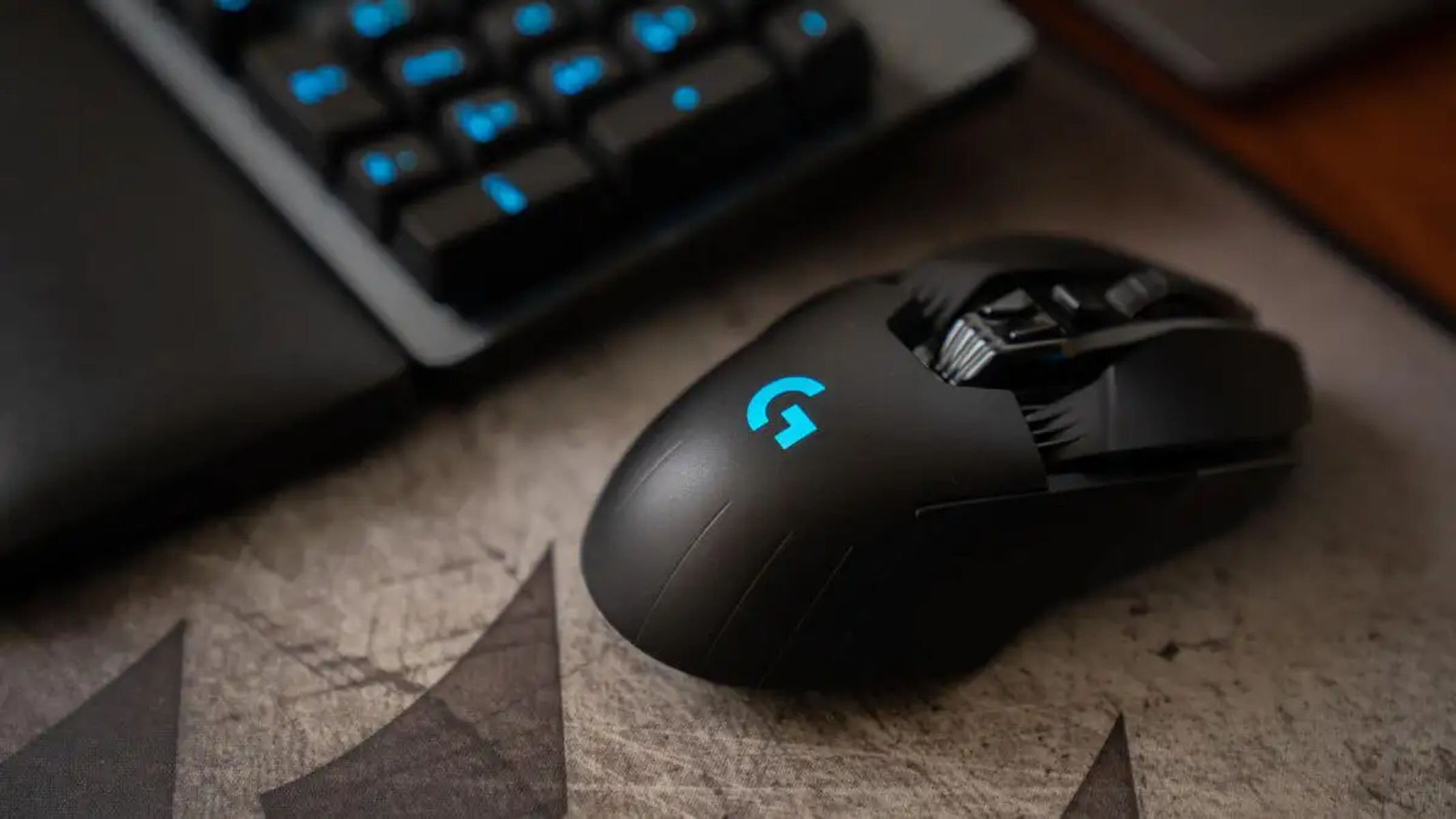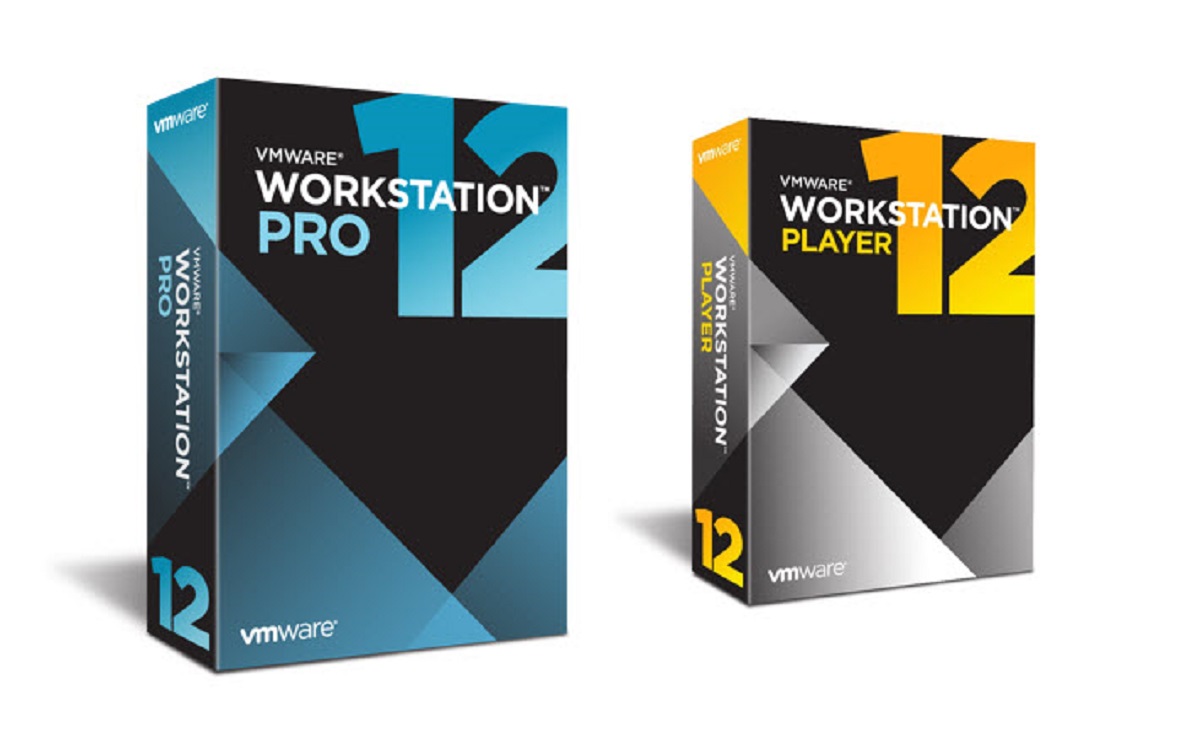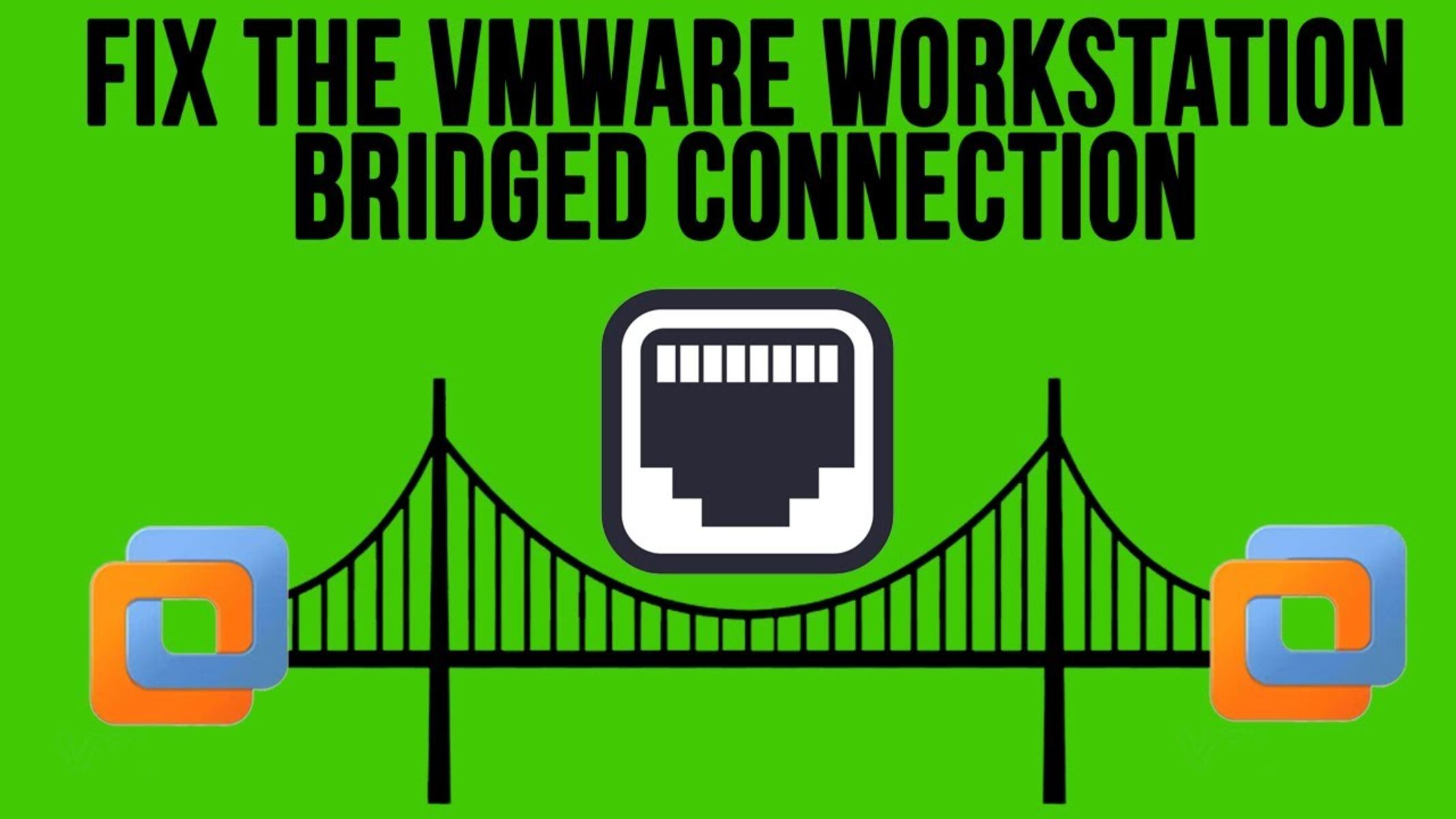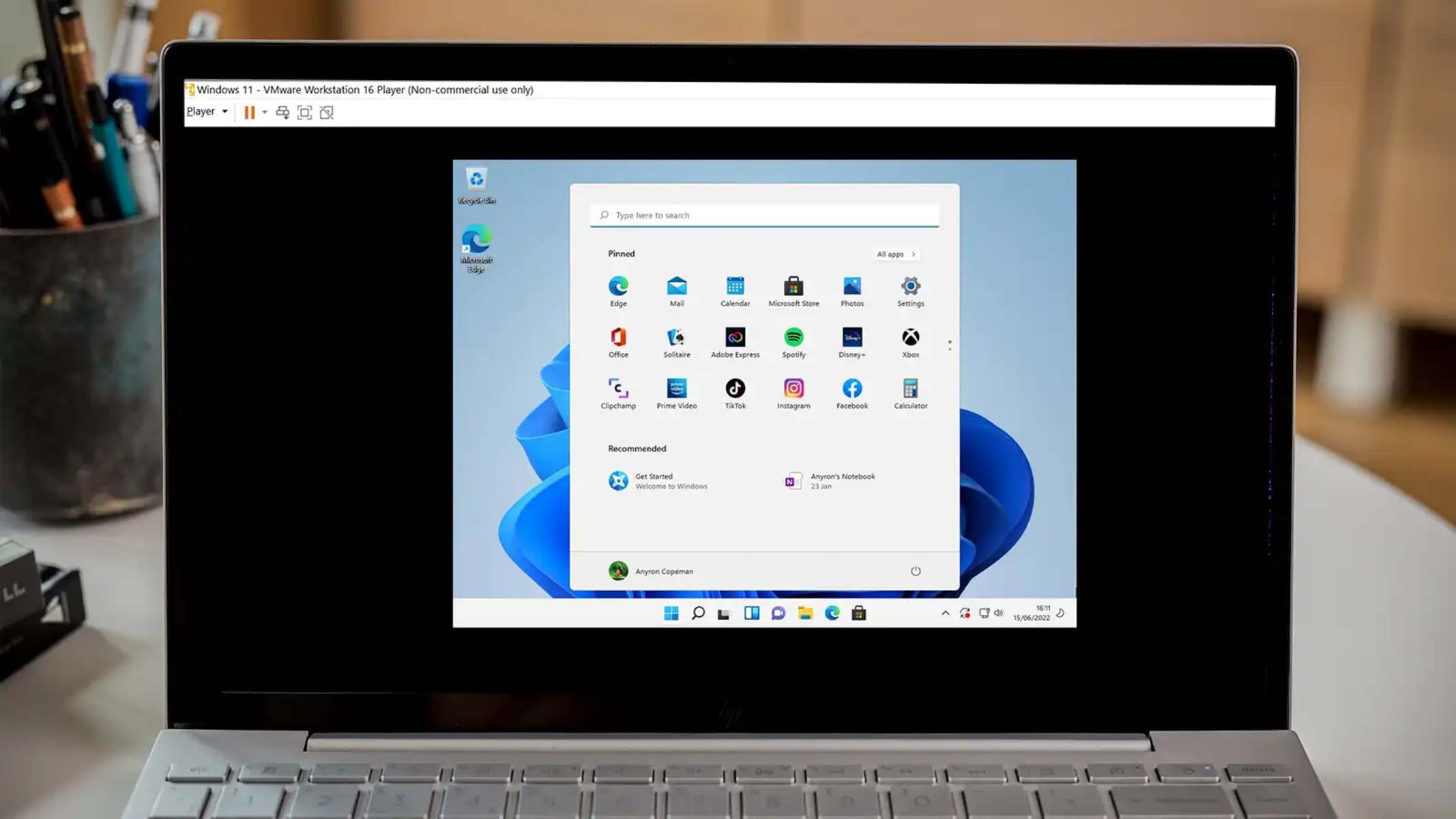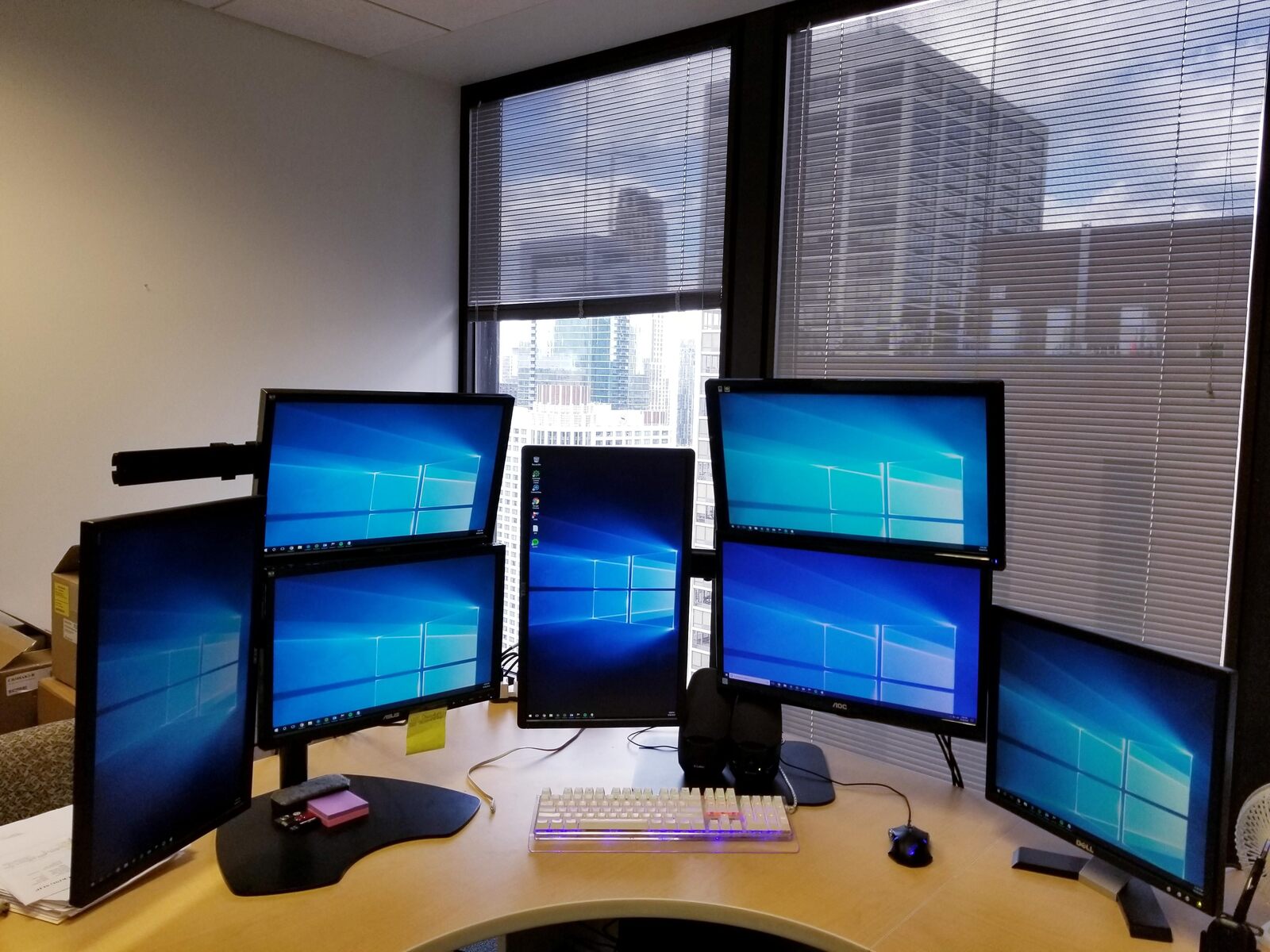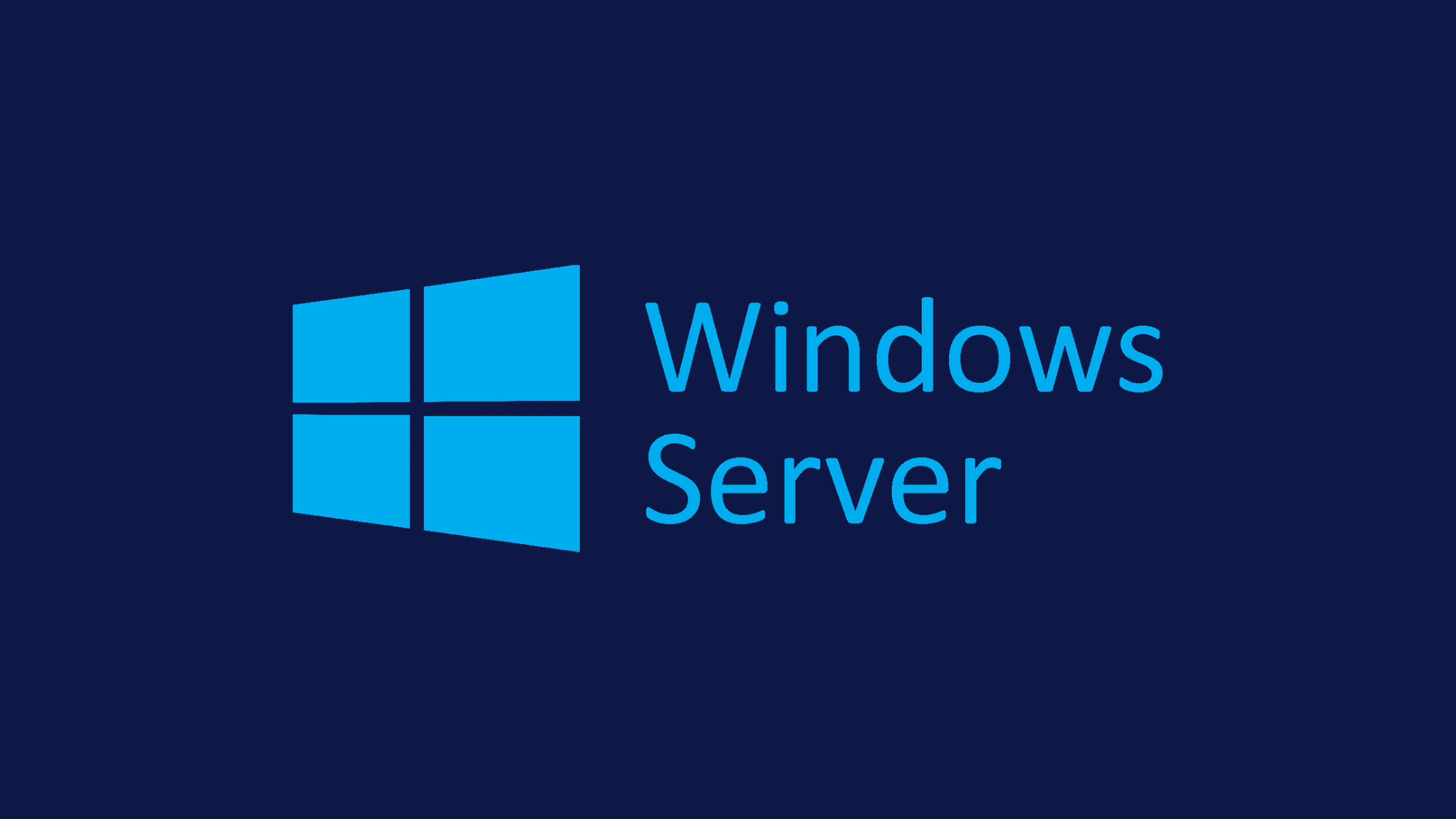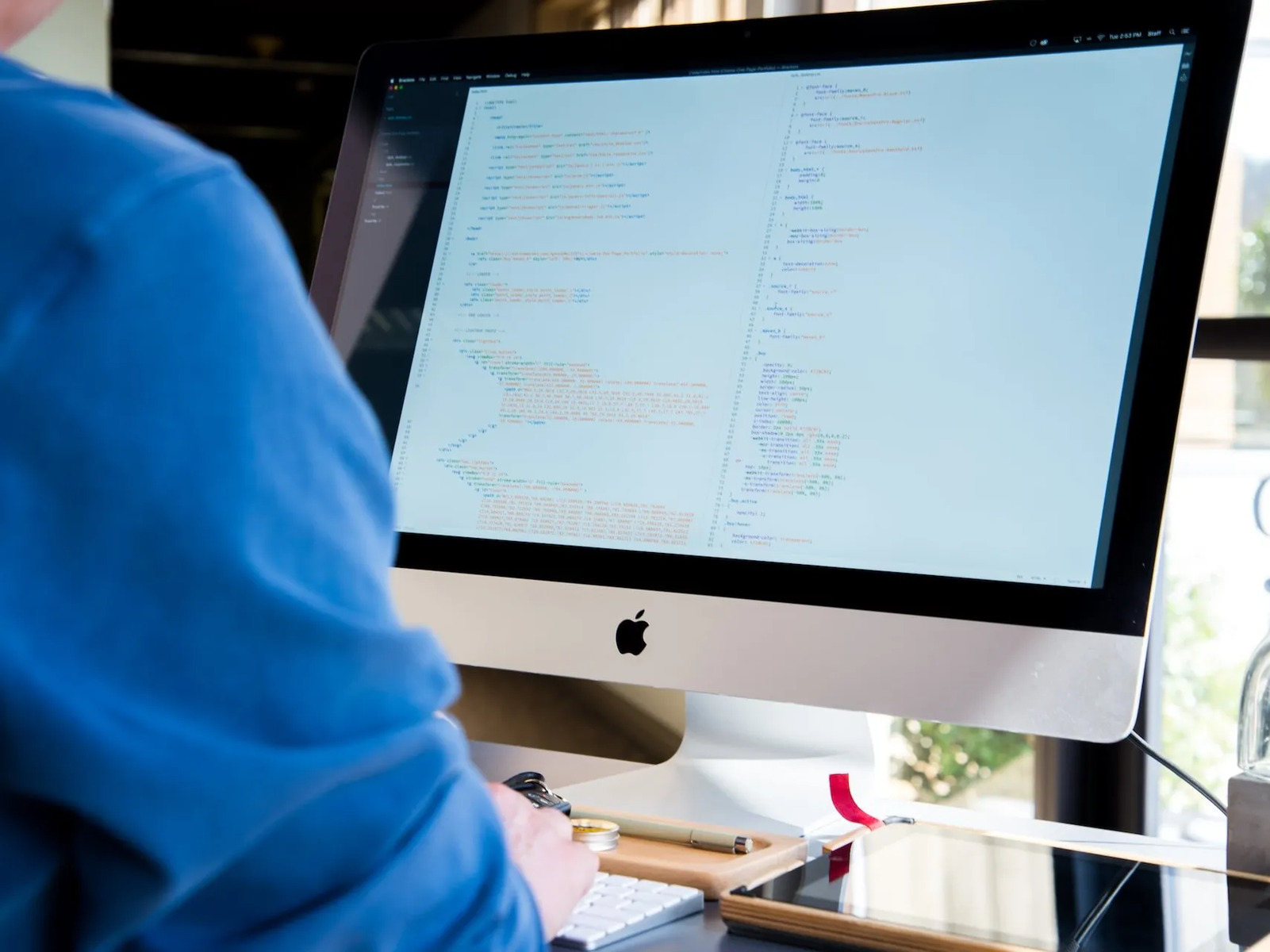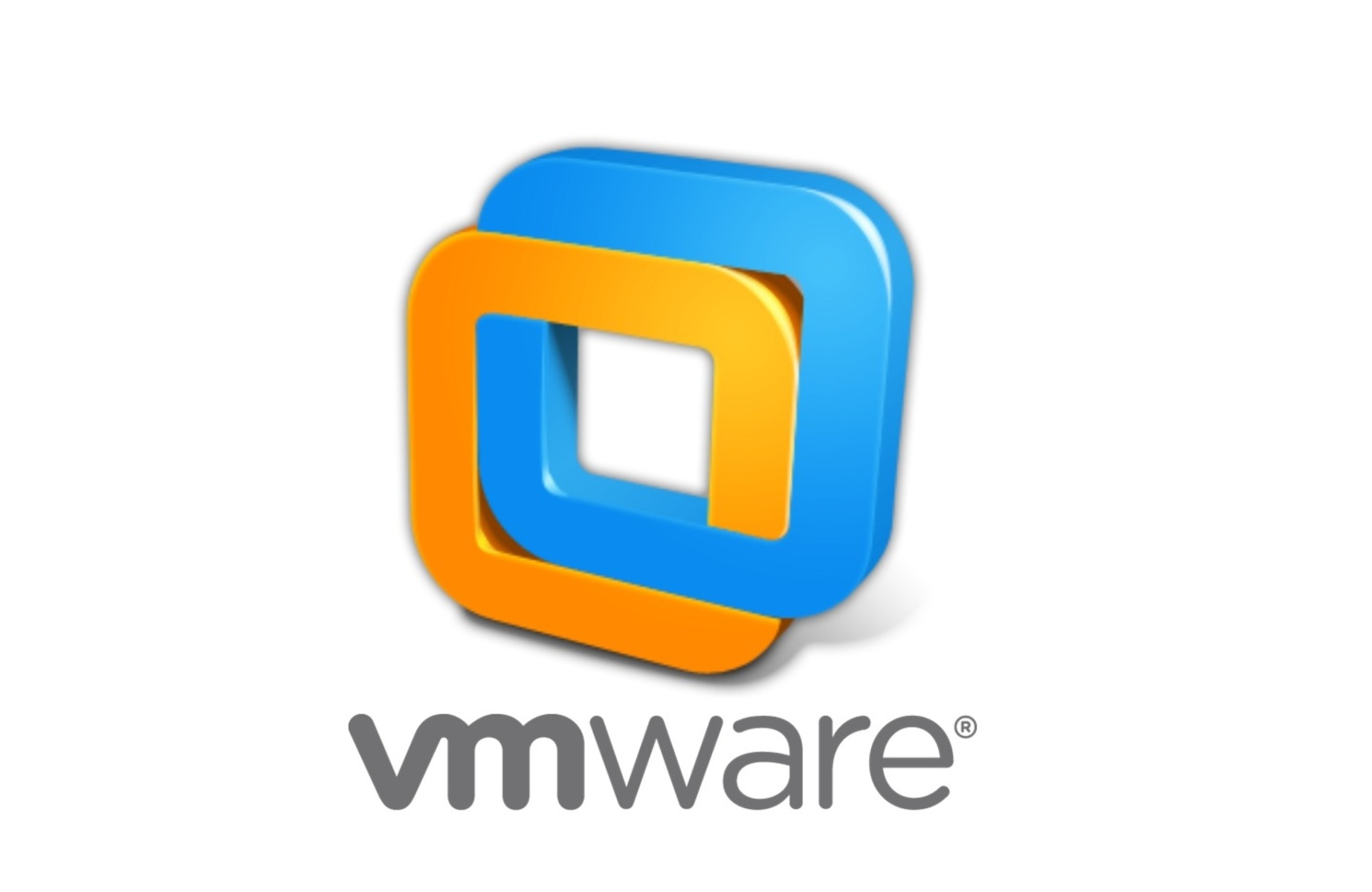Introduction
VMware Workstation Pro is a versatile virtualization software that allows users to run multiple operating systems on a single physical device. It provides a seamless experience by enabling users to control and interact with the guest operating systems through their mouse and keyboard.
However, there may be instances where you encounter issues with controlling the mouse in VMware Workstation Pro. This can be quite frustrating, as it hampers your productivity and affects the overall user experience. In this article, we will explore some of the possible causes behind these mouse control issues and provide solutions to troubleshoot them.
Mouse control problems in VMware Workstation Pro can manifest in various ways. You might experience a lag in mouse movement, a delay in click responses, or even a complete loss of mouse control within the guest operating system. These issues can occur in both Windows and Linux guests, and can be caused by a variety of factors.
The goal of this article is to help you identify and resolve mouse control issues in VMware Workstation Pro, so you can regain full control over your virtual machines and improve your overall user experience. We will discuss possible causes such as outdated or incompatible VMware tools, incorrect mouse settings in the guest operating system, mouse integration issues, insufficient host resources, mouse driver problems, and conflicts with other software or hardware.
Possible causes of mouse control issues in VMware Workstation Pro
When you encounter mouse control problems in VMware Workstation Pro, several factors may contribute to the issue. Understanding these potential causes can help you troubleshoot and resolve the problem effectively. Let’s explore the most common causes:
- Outdated or incompatible VMware tools: VMware Tools is a set of utilities that enhances the performance and functionality of guest operating systems. If you are using outdated or incompatible VMware Tools, it can lead to mouse control issues. It is essential to keep VMware Tools up to date to ensure optimal virtual machine performance.
- Incorrect mouse settings in the guest operating system: Sometimes, mouse control issues can arise from incorrect settings within the guest operating system. Incorrect mouse sensitivity settings or disabled mouse acceleration can impact your ability to control the mouse accurately. Checking and adjusting these settings within the guest can help resolve the problem.
- Mouse integration issues: VMware Workstation Pro offers a feature called “mouse integration” that allows you to seamlessly move your mouse cursor between the host and guest operating systems. However, problems with mouse integration can result in difficulties controlling the mouse within the guest OS. Enabling or disabling mouse integration can help resolve this issue.
- Insufficient host resources: Running multiple virtual machines simultaneously or having insufficient host resources allocated to the virtual machine can lead to performance issues, including problems with mouse control. If the host machine does not have enough memory or CPU power, it can affect the responsiveness of the mouse in the guest operating system.
- Mouse driver issues: Like any hardware device, the mouse in a virtual machine relies on the mouse driver for proper functioning. Outdated or corrupted mouse drivers can cause control problems within the guest OS. Ensuring that the mouse drivers are up to date can resolve these issues.
- Conflicts with other software or hardware: Sometimes, conflicts between VMware Workstation Pro, other software, or hardware components can result in mouse control problems. This could be due to conflicting input device drivers or compatibility issues. Identifying and resolving these conflicts can restore proper mouse control.
Understanding the potential causes of mouse control issues in VMware Workstation Pro is crucial to effectively troubleshoot and resolve the problem. In the following sections, we will delve into various solutions to address these causes and regain smooth and seamless mouse control within your virtual machines.
Outdated or incompatible VMware tools
One of the common causes of mouse control issues in VMware Workstation Pro is the use of outdated or incompatible VMware Tools. VMware Tools is a collection of drivers and utilities that enhance the performance and functionality of guest operating systems running within VMware Workstation Pro.
When the VMware Tools installed in a virtual machine are outdated or incompatible with the version of VMware Workstation Pro you are using, it can lead to various issues, including problems with mouse control. This occurs because the VMware Tools play a crucial role in facilitating the seamless integration of input devices like the mouse between the host and guest operating systems.
To resolve mouse control issues caused by outdated or incompatible VMware Tools, it is important to keep the VMware Tools up to date. Fortunately, VMware provides easy ways to update the VMware Tools within your virtual machines.
To update VMware Tools, follow these steps:
- Ensure that the virtual machine is powered on and running.
- In the VMware Workstation Pro menu, go to “VM” and select “Install VMware Tools”.
- A virtual CD/DVD drive will be mounted in the guest operating system containing the VMware Tools installer.
- Open the CD/DVD drive in the guest OS and run the VMware Tools installer.
- Follow the on-screen instructions to complete the installation.
- Once the installation is complete, restart the virtual machine.
By updating VMware Tools to the latest version, you ensure that the mouse integration feature is optimized and compatible with the host operating system. This can help resolve mouse control issues and provide a smoother, more responsive experience within your virtual machine.
If updating VMware Tools does not resolve the mouse control problem, it’s worth considering other potential causes explored in the subsequent sections.
Incorrect mouse settings in the guest operating system
Mouse control issues in VMware Workstation Pro can sometimes be attributed to incorrect settings within the guest operating system. These settings dictate how the mouse behaves within the virtual machine and can affect its responsiveness and accuracy.
To troubleshoot mouse control issues caused by incorrect settings in the guest operating system, you need to ensure that the mouse sensitivity, acceleration, and other related settings are properly configured.
Here’s how you can adjust the mouse settings in the guest operating system:
- Power on the virtual machine and login to the guest operating system.
- For Windows guests, navigate to the Control Panel and open the Mouse settings. On Linux guests, you may find the mouse settings under the System Settings or Preferences menu.
- Adjust the mouse sensitivity setting to your preference. Higher sensitivity allows for faster cursor movement, while lower sensitivity provides more control.
- Check if mouse acceleration is enabled or disabled. Mouse acceleration changes the cursor speed based on how fast you move the physical mouse. Experiment with enabling or disabling this feature to see if it improves mouse control.
- Save the changes and test the mouse control within the virtual machine to see if the issue has been resolved.
Additionally, it is important to ensure that the guest operating system has the correct drivers installed for the mouse. If the guest lacks the necessary drivers, it may cause mouse control issues. Check the manufacturer’s website or the operating system’s official support site for the appropriate drivers, and install them in the guest operating system.
By adjusting the mouse settings within the guest operating system and installing the correct drivers, you can address mouse control issues that stem from incorrect settings. However, if the issue persists, it may be necessary to explore other potential causes.
Mouse integration issues
Mouse integration is a feature in VMware Workstation Pro that allows for seamless movement of the mouse cursor between the host and guest operating systems. However, problems with mouse integration can lead to difficulties controlling the mouse within the guest OS.
If you are experiencing mouse control issues related to mouse integration, there are a few steps you can take to troubleshoot and resolve the problem:
- Disable and re-enable mouse integration: In the VMware Workstation Pro application, go to the “VM” menu and navigate to the “Manage” submenu. From there, select “Reinstall VMware Tools” or “Reinstall VMware Workstation Tools,” depending on the version you are using. This process will reinstall and enable mouse integration, potentially resolving any related issues.
- Check the VMware Workstation Pro settings: Open the “Preferences” window in VMware Workstation Pro and select the “Input” tab. Ensure that the “Mouse” box is checked under the “Guest Isolation” section. If it is not selected, enable the option and click “OK” to save the changes. Restart the virtual machine and check if the mouse control problem has been resolved.
- Disable conflicting mouse control features: Some guest operating systems have their mouse integration features, such as VMware Tools or VirtualBox Guest Additions. If these features are enabled and conflicting with VMware Workstation Pro’s mouse integration, it can lead to control issues. Disable any conflicting mouse integration features in the guest operating system and test the mouse control again.
- Check for VMware Workstation Pro updates: Make sure you are using the latest version of VMware Workstation Pro. Updates often include bug fixes and improvements, which can resolve mouse integration issues. Check for updates in the VMware Workstation Pro application and install any available updates.
If none of these steps resolve the mouse integration issue, it is recommended to reach out to VMware support for further assistance. They can provide more specific guidance based on your system configuration and help troubleshoot the issue in detail.
By troubleshooting mouse integration issues using these methods, you can regain smooth mouse control between the host and guest operating systems in VMware Workstation Pro.
Insufficient host resources
Another potential cause of mouse control issues in VMware Workstation Pro is insufficient host resources allocated to the virtual machine. Running multiple virtual machines simultaneously or not allocating sufficient resources to a particular virtual machine can impact overall performance, including mouse control.
When the host machine does not have enough memory or CPU power to handle the demands of the virtual machines, it can lead to laggy or unresponsive mouse movements within the guest operating system.
To troubleshoot mouse control problems caused by insufficient host resources, consider the following actions:
- Allocate more resources to the virtual machine: In the VMware Workstation Pro application, power off the virtual machine in question. Right-click on the virtual machine in the library and select “Settings.” Under the “Hardware” tab, adjust the memory and CPU settings to allocate more resources to the virtual machine. Restart the virtual machine and check if the mouse control improves.
- Close unnecessary applications or processes on the host machine: Running resource-intensive applications or processes on the host machine can consume system resources needed by VMware Workstation Pro. Close any unnecessary applications or processes to free up resources for the virtual machines.
- Consider upgrading the host machine: If mouse control issues persist despite adjusting resource allocations, it may be a sign that your host machine is unable to handle the workload. Consider upgrading your host machine’s memory, CPU, or storage capacity to better accommodate virtual machines.
By allocating more host resources to the virtual machine and optimizing the performance of the host machine, you can alleviate mouse control issues related to insufficient resources. However, if the problem persists, it may be necessary to explore other potential causes.
Mouse driver issues
Mouse driver issues can also be a cause of mouse control problems in VMware Workstation Pro. Just like any hardware device, the mouse within a virtual machine relies on the correct mouse driver to function properly. Outdated or corrupted mouse drivers can lead to erratic or non-responsive mouse behavior within the guest operating system.
If you suspect that mouse driver issues are causing the control problems, here are some steps you can take to troubleshoot and resolve the issue:
- Check for and install updated mouse drivers: Visit the website of the mouse manufacturer and download the latest drivers compatible with the guest operating system. Install the drivers within the guest OS and restart the virtual machine. This can potentially resolve mouse control issues caused by outdated or incompatible drivers.
- Verify the mouse driver installation: Open the Device Manager in the guest operating system, locate the mouse device, and ensure that the driver is installed correctly without any error indications. If there are any issues with the driver installation, you may need to uninstall and reinstall the mouse drivers.
- Use generic mouse drivers: If specific mouse drivers are causing compatibility problems, you can try uninstalling them and using generic mouse drivers provided by the guest operating system. Generic drivers often have basic functionality that can help restore mouse control in the virtual machine.
It’s important to note that some guest operating systems automatically detect and install the necessary mouse drivers without requiring manual intervention. In such cases, the issue may be related to other causes, and troubleshooting steps specific to those causes should be considered.
Resolving mouse control issues due to mouse driver problems can vary depending on the guest operating system and mouse hardware. If the issue persists after trying these troubleshooting steps, it may be helpful to seek support from the manufacturer or consult user forums and communities for further assistance.
Conflicts with other software or hardware
Mouse control issues in VMware Workstation Pro can sometimes be caused by conflicts with other software or hardware components on your system. These conflicts can arise due to a variety of reasons, such as incompatible input device drivers or conflicts between virtualization software and other applications.
If you suspect conflicts with other software or hardware are causing mouse control problems, consider the following steps to resolve the issue:
- Disable or uninstall conflicting software: Certain software applications, especially those involving input devices or virtualization, can interfere with mouse control in VMware Workstation Pro. Temporarily disable or uninstall any recently installed software that may be causing conflicts. Test the mouse control to see if the issue is resolved.
- Update or reinstall input device drivers: Conflicts between input device drivers can lead to mouse control problems. Ensure all your input device drivers, such as mouse, keyboard, or touchpad drivers, are up to date. If conflicts persist, try uninstalling and reinstalling the drivers to ensure a clean installation.
- Check for conflicting virtualization software: If you have other virtualization software installed on your system, such as VirtualBox or Hyper-V, conflicts may arise between these applications and VMware Workstation Pro. Disable or uninstall any conflicting virtualization software to see if the mouse control issues are resolved.
- Disconnect unused input devices: In some cases, having multiple input devices connected to the host machine can cause conflicts with mouse control in VMware Workstation Pro. Disconnect any unused input devices, such as external mice or keyboards, and test the mouse control within the virtual machine.
- Check for system-wide input device settings: System-wide settings related to input devices, such as mouse acceleration or pointer speed, can impact mouse control in virtual machines. Ensure that these settings are configured appropriately and not conflicting with mouse control in VMware Workstation Pro.
It’s worth noting that resolving conflicts with other software or hardware may require specific troubleshooting steps based on your system configuration and the conflicting components involved. If the mouse control issues persist after following these steps, consider reaching out to VMware support or seeking assistance from relevant forums or communities to address the specific conflicts causing the issue.
Solutions to troubleshoot mouse control issues
When facing mouse control problems in VMware Workstation Pro, it’s essential to implement effective troubleshooting solutions to regain smooth and accurate mouse functionality within your virtual machines. Here are some solutions to consider:
- Update VMware Tools: Outdated or incompatible VMware Tools can cause mouse control issues. Ensure that you have the latest version of VMware Tools installed in your virtual machine. You can update it by selecting “Install VMware Tools” in the VM menu, followed by installing the tools within the guest operating system.
- Adjust mouse settings in the guest operating system: Incorrect mouse settings can lead to problems with mouse control. Check and adjust the mouse sensitivity, acceleration, and other related settings within the guest operating system to optimize mouse functionality.
- Enable mouse integration: Mouse integration allows seamless movement of the mouse cursor between the host and guest operating systems. Enable or disable mouse integration in VMware Workstation Pro, depending on your requirements and the behavior you desire for mouse control.
- Allocate more host resources to the virtual machine: Insufficient host resources can impact mouse control. Increase the memory and CPU allocations for the virtual machine to improve overall performance, including mouse responsiveness within the guest operating system.
- Check and update mouse drivers: Outdated or corrupted mouse drivers can cause mouse control issues. Update the mouse drivers within the guest operating system or reinstall them to ensure proper functionality and compatibility.
- Identify and resolve conflicts with other software or hardware: Conflicts between VMware Workstation Pro, other applications, or hardware components can impact mouse control. Disable or uninstall conflicting software, update device drivers, disconnect unused input devices, and ensure system-wide input device settings are properly configured.
Implementing these troubleshooting solutions should help you address mouse control issues in VMware Workstation Pro. However, if the problems persist or you encounter unique or complex scenarios, it’s advisable to refer to official documentation, seek assistance from VMware support, or consult online forums to obtain further guidance specific to your situation.
Update VMware Tools
Updating VMware Tools is an important step in troubleshooting mouse control issues in VMware Workstation Pro. VMware Tools is a collection of drivers and utilities that enhance the performance and functionality of guest operating systems running within VMware Workstation Pro.
Outdated or incompatible VMware Tools can lead to various issues, including problems with mouse control. Keeping VMware Tools up to date is crucial to ensure optimal virtual machine performance and seamless integration of input devices like the mouse between the host and guest operating systems.
To update VMware Tools, follow these steps:
- Ensure that the virtual machine is powered on and running.
- In the VMware Workstation Pro menu, go to “VM” and select “Install VMware Tools”.
- A virtual CD/DVD drive will be mounted in the guest operating system, containing the VMware Tools installer.
- Open the CD/DVD drive in the guest OS and run the VMware Tools installer.
- Follow the on-screen instructions to complete the installation.
- Once the installation is complete, restart the virtual machine.
By updating VMware Tools to the latest version, you ensure that the mouse integration feature is optimized and compatible with the host operating system. This can help resolve mouse control issues and provide a smoother, more responsive experience within your virtual machine.
If updating VMware Tools does not resolve the mouse control problem, it’s worth considering other potential causes discussed in previous sections.
Adjust mouse settings in the guest operating system
Incorrect mouse settings in the guest operating system can be a common cause of mouse control issues in VMware Workstation Pro. Adjusting these settings can help improve the responsiveness and accuracy of the mouse within the virtual machine.
To troubleshoot mouse control problems caused by incorrect settings in the guest operating system, follow these steps:
- Power on the virtual machine and log in to the guest operating system.
- For Windows guests, navigate to the Control Panel and open the Mouse settings. On Linux guests, you may find the mouse settings under the System Settings or Preferences menu.
- Adjust the mouse sensitivity setting to your preference. Higher sensitivity allows for faster cursor movement, while lower sensitivity provides more control.
- Check if mouse acceleration is enabled or disabled. Mouse acceleration changes the cursor speed based on how fast you move the physical mouse. Experiment with enabling or disabling this feature to see if it improves mouse control.
- Save the changes and test the mouse control within the virtual machine to see if the issue has been resolved.
It’s important to note that some guest operating systems may have additional mouse settings that can impact mouse control. Explore the available options within the guest OS and adjust them accordingly for the best mouse performance.
In addition to adjusting the mouse settings, it is crucial to ensure that the guest operating system has the correct drivers installed for the mouse. If the guest OS lacks the necessary drivers, it may result in mouse control issues. Check the manufacturer’s website or the operating system’s official support site for the appropriate drivers and install them within the guest operating system.
By adjusting the mouse settings in the guest operating system and installing the correct drivers, you can address mouse control issues that stem from incorrect settings. However, if the issue persists, it may be necessary to explore other potential causes discussed in previous sections.
Enable mouse integration
Mouse integration is a key feature in VMware Workstation Pro that allows for seamless movement of the mouse cursor between the host and guest operating systems. When mouse integration is enabled, you can control the mouse within the guest OS as if it were directly running on your physical machine.
If you are experiencing mouse control issues in VMware Workstation Pro, it’s important to ensure that mouse integration is properly enabled. Here’s how you can do it:
- Power on the virtual machine if it’s not already running.
- In the VMware Workstation Pro application, click on the virtual machine to select it.
- Go to the “VM” menu and navigate to the “Manage” submenu.
- Click on “Reinstall VMware Tools” or “Reinstall VMware Workstation Tools,” depending on the version you are using.
- This will initiate the reinstallation of VMware Tools, including the necessary mouse integration components.
- Follow the on-screen instructions to complete the reinstallation process.
- Once the reinstallation is done, restart the virtual machine to activate the changes.
Enabling mouse integration ensures that the mouse behaves seamlessly between the host and guest OS, providing a smoother and more natural experience within the virtual machine.
It’s important to note that mouse integration may not be suitable for all scenarios or guest operating systems. In some cases, you may need to disable mouse integration to resolve specific mouse control issues or for compatibility reasons. Experiment with enabling or disabling mouse integration based on your specific needs and the behavior you desire for mouse control.
If enabling mouse integration doesn’t resolve the mouse control problem, it’s recommended to explore other potential causes and solutions mentioned in previous sections.
Allocate more host resources to the virtual machine
In VMware Workstation Pro, mouse control issues can occur when the virtual machine does not have sufficient host resources allocated to it. Insufficient host resources can lead to performance bottlenecks, affecting the responsiveness and accuracy of the mouse within the guest operating system.
If you are experiencing mouse control problems, it’s important to ensure that the virtual machine has enough memory and CPU power assigned to it. Here are steps to allocate more host resources:
- Ensure that the virtual machine is powered off.
- In VMware Workstation Pro, right-click on the virtual machine in the library and select “Settings”.
- Under the “Hardware” tab, increase the memory allocation by sliding the bar or entering a higher value in the memory settings.
- Similarly, adjust the CPU allocation by increasing the number of processors or cores assigned to the virtual machine.
- Click “OK” to save the changes.
- Power on the virtual machine to apply the updated resource allocations.
By allocating more host resources to the virtual machine, you are providing it with the necessary memory and CPU power to handle the workload effectively. This can result in improved overall performance, including enhanced mouse control within the guest operating system.
It’s important to note that allocating more resources to a virtual machine requires available resources on the host machine. If the host machine does not have sufficient resources, it may impact the performance of other running applications or virtual machines. Balance the resource allocations accordingly based on your system capabilities and requirements.
If allocating more host resources does not resolve the mouse control problem, it’s recommended to explore other potential causes and solutions discussed in previous sections.
Check and update mouse drivers
Mouse control issues in VMware Workstation Pro can sometimes be attributed to problems with mouse drivers. Outdated or corrupted mouse drivers can lead to erratic mouse behavior or even a complete loss of control within the guest operating system.
To troubleshoot mouse control problems caused by mouse drivers, you should check for updates and ensure the drivers are properly installed. Here’s how you can do it:
- Identify the manufacturer and model of your mouse. This information can usually be found on the mouse itself or in the documentation that came with it.
- Visit the website of the mouse manufacturer and navigate to the support or downloads section.
- Search for the latest drivers available for your mouse model and download them.
- Once downloaded, open the mouse driver installer and follow the on-screen instructions to update the drivers within the guest operating system.
- After the installation is complete, restart the virtual machine to ensure that the new mouse drivers take effect.
Updating the mouse drivers can help resolve compatibility issues, improve performance, and restore proper mouse control within the virtual machine.
If you are unable to find the specific drivers for your mouse or if updating the drivers does not resolve the mouse control problem, you can try using generic mouse drivers provided by the guest operating system. These generic drivers typically offer basic functionality that may help regain control over the mouse within the virtual machine.
It’s important to note that some guest operating systems automatically detect and install the necessary mouse drivers without requiring manual intervention. However, it’s always a good practice to verify the driver installation within the guest operating system’s Device Manager and ensure there are no error indications.
If mouse control issues persist even after updating or reinstalling the mouse drivers, consider exploring other potential causes and solutions discussed in previous sections.
Identify and resolve conflicts with other software or hardware
Mouse control problems in VMware Workstation Pro can often stem from conflicts with other software or hardware components on your system. These conflicts can arise due to various reasons, such as incompatible input device drivers or conflicts between virtualization software and other applications.
To troubleshoot mouse control issues caused by conflicts with other software or hardware, consider the following steps:
- Disable or uninstall conflicting software: Certain software applications, especially those involving input devices or virtualization, can interfere with mouse control in VMware Workstation Pro. Temporarily disable or uninstall any recently installed software that may be causing conflicts. Test the mouse control to see if the issue is resolved.
- Update or reinstall input device drivers: Conflicts between input device drivers can lead to mouse control issues. Ensure all your input device drivers, such as mouse, keyboard, or touchpad drivers, are up to date. If conflicts persist, try uninstalling and reinstalling the drivers to ensure a clean installation.
- Check for conflicting virtualization software: If you have other virtualization software installed on your system, such as VirtualBox or Hyper-V, conflicts may arise between these applications and VMware Workstation Pro. Disable or uninstall any conflicting virtualization software to see if the mouse control issues are resolved.
- Disconnect unused input devices: Having multiple input devices connected to the host machine can cause conflicts with mouse control in VMware Workstation Pro. Disconnect any unused input devices, such as external mice or keyboards, and test the mouse control within the virtual machine.
- Check for system-wide input device settings: System-wide settings related to input devices, such as mouse acceleration or pointer speed, can impact mouse control in virtual machines. Ensure that these settings are configured appropriately and not conflicting with mouse control in VMware Workstation Pro.
It’s important to note that resolving conflicts with other software or hardware may require specific troubleshooting steps based on your system configuration and the conflicting components involved. If the mouse control issues persist after applying the above steps, consider reaching out to VMware support or seeking assistance from relevant forums or communities to address the specific conflicts causing the issue.
Conclusion
Mouse control issues can significantly impact the user experience in VMware Workstation Pro. However, by understanding and addressing the possible causes of these issues, you can regain smooth and accurate mouse functionality within your virtual machines.
In this article, we explored several common causes of mouse control problems and provided troubleshooting solutions. Outdated or incompatible VMware Tools, incorrect mouse settings in the guest operating system, mouse integration issues, insufficient host resources, mouse driver problems, and conflicts with other software or hardware can all contribute to mouse control issues. By systematically troubleshooting each potential cause, you can identify and resolve the underlying problem.
Updating VMware Tools, adjusting mouse settings in the guest operating system, enabling or disabling mouse integration, allocating more host resources, checking and updating mouse drivers, and resolving conflicts with other software or hardware are all effective solutions to various mouse control problems.
Remember that each issue may have a different root cause, and the steps to fix it may vary. It’s important to apply the troubleshooting steps that are applicable to your specific situation. Additionally, consulting official documentation, seeking assistance from VMware support, or engaging with online forums and communities can provide further guidance tailored to your circumstances.
By following the troubleshooting solutions presented in this article, you can troubleshoot and resolve mouse control issues in VMware Workstation Pro, improving your overall user experience and productivity within virtual machines.







